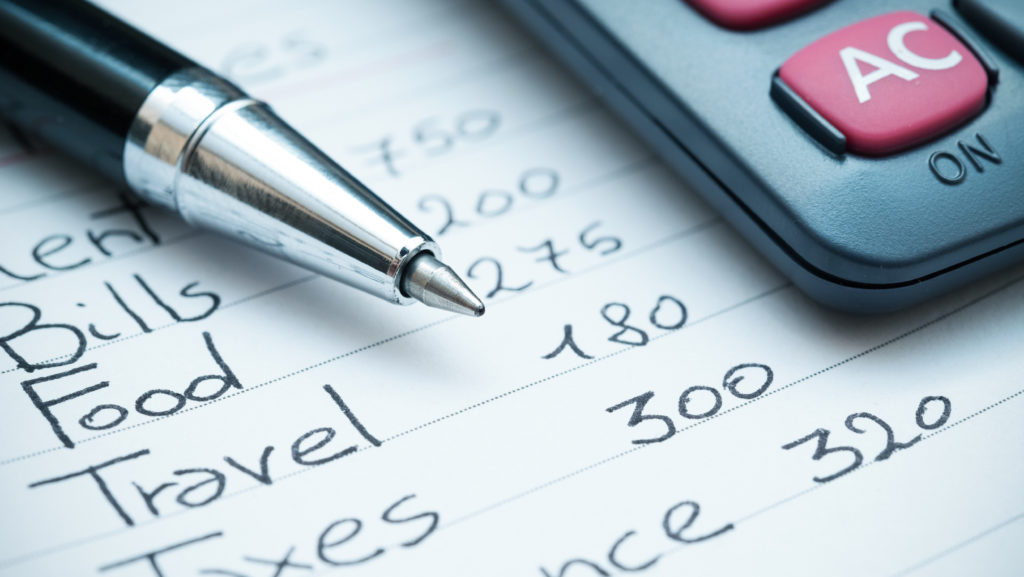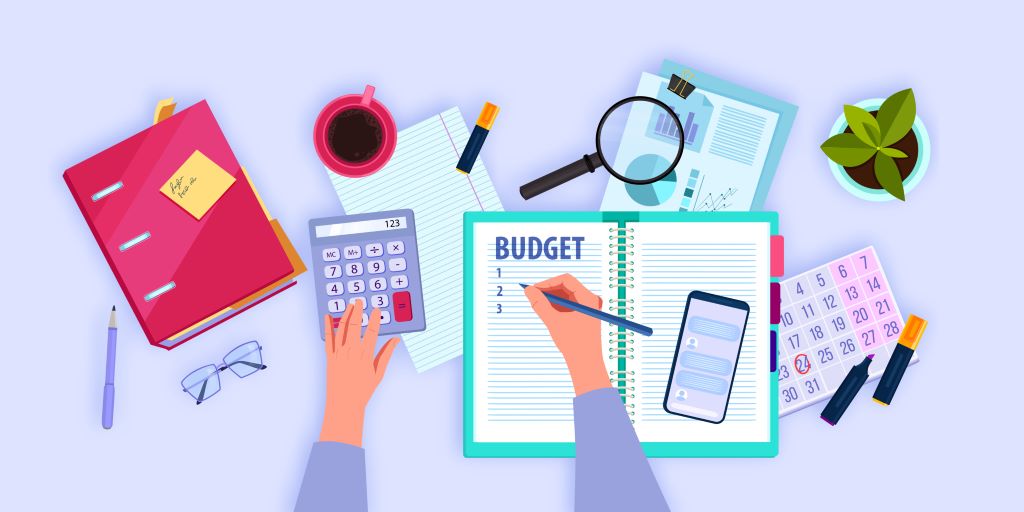
Budgeting is the cornerstone of financial success. Despite what you may think, budgeting is not just about restricting your spending; it’s about aligning your spending with your priorities. With a solid budgeting plan, you can take control of your finances, reduce stress, and work towards your financial goals. Do you want to learn how to budget? If the answer is yes, you’ve come to the right place. Here’s a step-by-step guide to help you master the art of budgeting. After we’re done, you should be a pro at building your own budget!
Before we get started, ask yourself why you want a budget in the first place. Do you want to know exactly where your paycheck is going? Do you want to set and reach financial goals personally or as a family? Whatever the reason may be, keep it in mind as you build your budget. Not only will this be helpful in shaping your budget and reaching your goals, but it can add motivation and help to hold you accountable as you start to implement your budget.

What You Should Do Before You Make Your Budget
Before you learn how to create a budget, there are a few things you’ll need to do in preparation:
Step 1: Set Clear Financial Goals
Start by defining your short-term and long-term financial goals. These could include goals such as saving for a vacation, paying off debt, or buying a home. Make sure your goals are specific, measurable, achievable, relevant, and time-bound (SMART).
Step 2: Calculate Your Income
Figure out your total monthly income, including salaries, bonuses, freelance earnings, and any other sources of income. We recommend monthly, because most people have monthly bills. So, a budget based on a monthly schedule is usually the most practical. However, set up your budget in a way that makes the most sense to you and your lifestyle.
“Income” on your budget should be recorded after taxes are taken out, or for those who are self-employed, after what you’ve set aside for taxes.
Incomes can look different from month to month, especially for those who are self-employed. If this is your situation, calculate the average. Or play it safe and plan for the minimum you can expect that month.

Step 3: Track Your Expenses
After you’ve determined your total monthly income, track all your expenses for a month. This can help you understand where your money is going. As you do this, you’ll need to categorize each of your expenses into one of the following three categories:
- Fixed Expenses: These are the expenses that you know to expect every month, and usually don’t change. They are also usually the top priority. Housing, a car payment/transportation, your cell phone, utilities (though they can fluctuate), cable/TV, insurance, etc. are all examples of fixed expenses.
- Flexible Expenses: These expenses can fluctuate, but are also still extremely important to account for. Things such as groceries, eating out, entertainment, and necessities, are all flexible expenses.
- Occasional Expenses or Periodic Expenses: These are the ones that come up occasionally, including expenses such as new clothes, gifts for family around the holidays, new tires for your vehicle, annual expenses, a family vacation, etc.
Once you know how much income you can count on, and where your money is going, evaluate how much money is left over after the fixed expenses are paid, then the flexible expenses, and finally, the occasional expenses.

How to Make a Budget
Now that all your prep work is out of the way, learning how to budget and save money will be much easier!
Step 1: Create Your Budget
Based on your income and expenses, create a budget that allocates a portion of your income to each expense category. To make things easier on yourself, you can use budgeting tools such as a budgeting calculator or apps.* These tools can help simplify this process and track your progress.
Step 2: Cut Unnecessary Expenses
If your income doesn’t cover your expenses, ask yourself what can be eliminated or altered. Review your expenses and identify areas where you can cut back, such as dining out, subscription services, or impulse purchases. Things like groceries are necessities, but there are ways to save on groceries to help lower that cost. Be willing to adjust your plan as you get a better picture of your finances. Then you can use the money saved to boost your savings or pay off debt faster. We’ll show you how to do this in the next step.
Step 3: Prioritize Savings and Debt Repayment
Is there money left over? Congratulations! With the leftover money, now would be a great time to start a savings account! One large misconception is that you need a large amount of money to start a savings account. Instead, consider having a goal to gradually build up to $500, or $1,000. While a good rule of thumb is to save at least 20% of your income and use the rest for expenses, don’t let this number intimidate you. Put whatever amount into your savings account that you feel comfortable with, as long as you remain consistent. Whether you put $5, or $500 in a savings account each week or month, try to make it a habit to save a set amount. Making a habit out of it can help keep you on track. Before you know it, you could have an impressive savings account!
Take this one step further and consider automating your savings for consistency.
Step 4: Monitor and Adjust
Regularly review your budget to make sure you’re staying on track. Adjust your budget as needed to accommodate changes in your income or expenses.

Step 5: Build an Emergency Fund
Aim to save 3-6 months’ worth of living expenses in an emergency fund. This can help you cover unexpected costs without derailing your financial plan.
Step 6: Seek Professional Advice
If you’re struggling with budgeting or have complex financial needs, consider seeking advice from a financial advisor.
Step 7: Stay Committed
Budgeting is a long-term commitment. So, stay disciplined and focused on your financial goals, even when faced with challenges. Be sure to reevaluate frequently, and adjust as needed. There may be expenses you didn’t realize you needed to address each month or ways you didn’t know you could cut down on expenses. So, be willing to be flexible as you create a plan to reach your goals.
How to Budget
Budgeting is a powerful tool that can help you achieve financial stability and reach your financial goals. By setting clear goals, tracking your income and expenses, prioritizing savings and debt repayment, and staying committed, you can take control of your finances and build a secure financial future.
*High-interest loans can be expensive and should be used only for short-term financial needs, not long-term solutions. Customers with credit difficulties should seek credit counseling. The opinions expressed above are solely the author’s views and may or may not reflect the opinions and beliefs of the website or its affiliates. Cash Factory USA does not provide financial advice.
This blog contains links to other third-party websites that are not endorsed by, directly affiliated with, or sponsored by Cash Factory USA. Such links are only for the convenience of the reader, user, or browser.